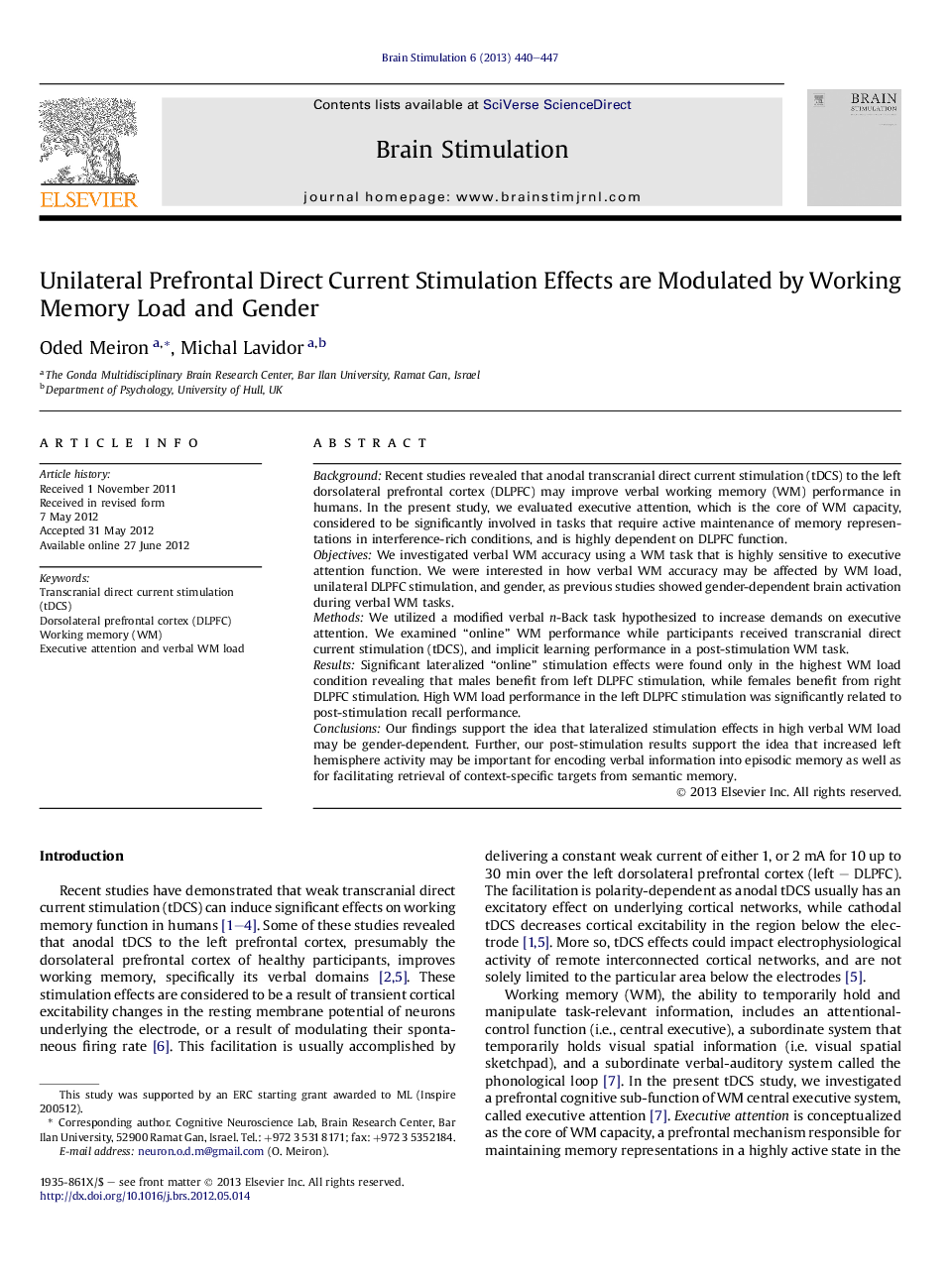| Article ID | Journal | Published Year | Pages | File Type |
|---|---|---|---|---|
| 3039032 | Brain Stimulation | 2013 | 8 Pages |
BackgroundRecent studies revealed that anodal transcranial direct current stimulation (tDCS) to the left dorsolateral prefrontal cortex (DLPFC) may improve verbal working memory (WM) performance in humans. In the present study, we evaluated executive attention, which is the core of WM capacity, considered to be significantly involved in tasks that require active maintenance of memory representations in interference-rich conditions, and is highly dependent on DLPFC function.ObjectivesWe investigated verbal WM accuracy using a WM task that is highly sensitive to executive attention function. We were interested in how verbal WM accuracy may be affected by WM load, unilateral DLPFC stimulation, and gender, as previous studies showed gender-dependent brain activation during verbal WM tasks.MethodsWe utilized a modified verbal n-Back task hypothesized to increase demands on executive attention. We examined “online” WM performance while participants received transcranial direct current stimulation (tDCS), and implicit learning performance in a post-stimulation WM task.ResultsSignificant lateralized “online” stimulation effects were found only in the highest WM load condition revealing that males benefit from left DLPFC stimulation, while females benefit from right DLPFC stimulation. High WM load performance in the left DLPFC stimulation was significantly related to post-stimulation recall performance.ConclusionsOur findings support the idea that lateralized stimulation effects in high verbal WM load may be gender-dependent. Further, our post-stimulation results support the idea that increased left hemisphere activity may be important for encoding verbal information into episodic memory as well as for facilitating retrieval of context-specific targets from semantic memory.
